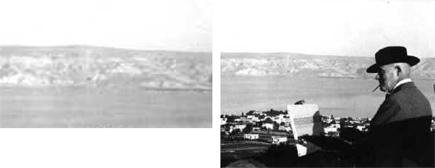
| HOME |
| ARTISTS |
| CATALOGUES |
| PANN'S BIBLE |
|
|
| BIBLICAL LITHOGRAPHS | |
| OTHERS | |
| PAINTINGS | |
| SOLD | |
| ABOUT THE ARTIST |
Ludwig Blum was born in Czechoslovakia, and died in Jerusalem. The gifts of the artist were revealed in early youth with his drawings of peasants. His professional education commenced with the painter D. Cohen in Vienna, followed by studies at the Royal Academy, and finally in 1919, the Prague Academy. His service in the Austrian Army interrupted his studies for 5 years during World War I. The Academy was followed by the classical painter's pilgrimage to Holland, France and Spain. He was always a sportsman, and enthusiastic Zionist. In 1923, he settled in Israel and ultimately in Jerusalem. . . Ludwig Blum exhibited frequently, both in Israel and abroad. In 1933, one of his paintings – "Jerusalem" – received special mention at the Royal Academy, London. Four periods can be distinguished in the work of the artist. The first, which ended with his arrival in Israel, consisted of the search for a decisive style. Few paintings survive from that period. The second commenced with his arrival in Jerusalem. The atmosphere of the orient, the strong colors and the life of the bazaar were absorbed and mastered: the age-old alleys of the Old City, the walls of Jerusalem as seen from the Mount of Olives and the mountains of Moab for an ever-recurrent theme. In 1936, the Palestine Museum at Brno commissioned a vast canvas (8 x 2 meters) of Jerusalem. His third period commenced with Israel's struggle for independence. After his son fell in action with the Palmach, in 1946, at age 20, the painter and his wife became active members of the Home Guard, without interruption to his work. Many of the most interesting canvases date from that time. Blum became a front line painter. The war in Jerusalem and in the Negev, the fighters – men and women – the whole struggle of renascent Israel have all been presented by his vivid brush. All these canvases were dedicated to the memory of his son Eli. The fourth period began after the establishment of the State. The Old City has been replaced by the streets and markets of Mea Shearim and other views of the New Town and all of Israel from Tiberias to Eilat appear before us. In 1967, Ludwig Blum received the honorary reward of "Yakir Yerushalayim" for his artistic tribute to the city. Blum was a painter of love. He loved his country, and his country reciprocated that love. Today, Blum occupies a central place among the masters of Eretz Israel. His works are found in museums and private collections around the world. They increase in value and are much sought after by collectors. In 1988, a major exhibition accompanied by an important and beautifu catalogue was presented by Mayanot Gallery. It was one of a continuing series of fine shows of the works of early 20th century Israeli Masters shown by Mayanot Gallery. |
||||
| HOME ABOUT | |
